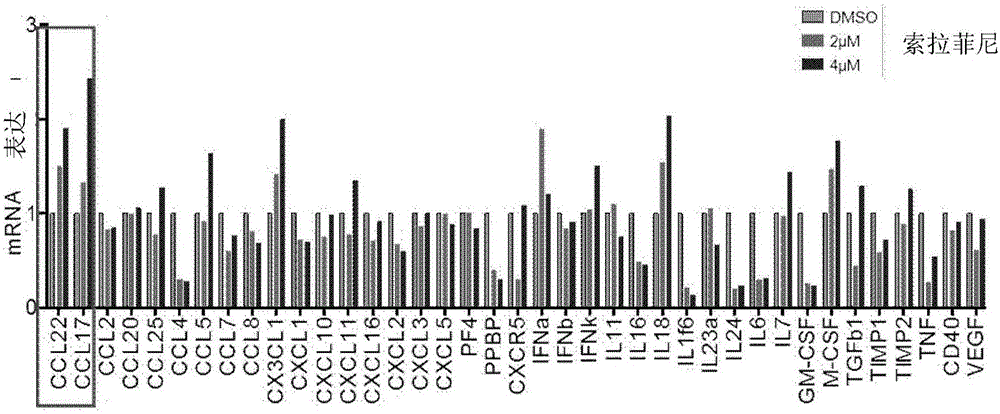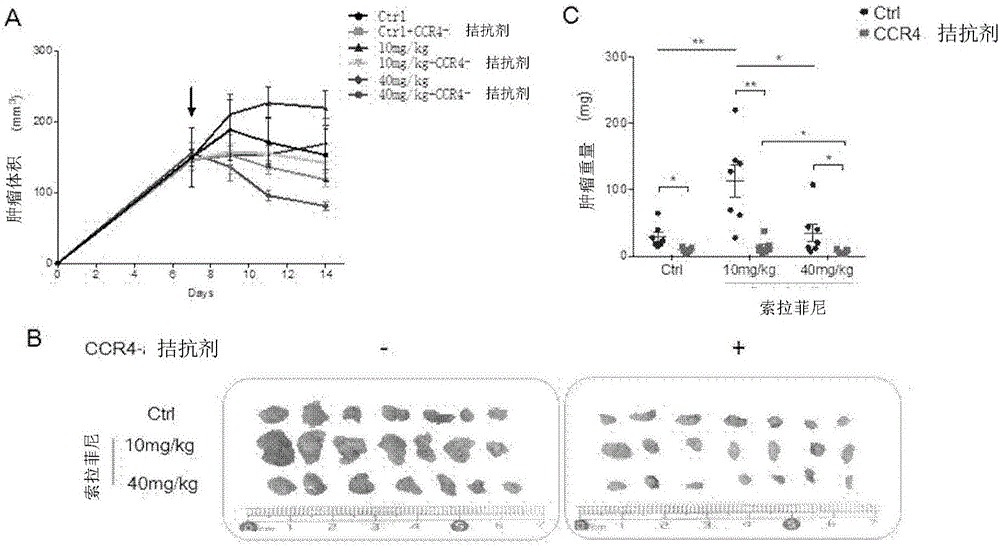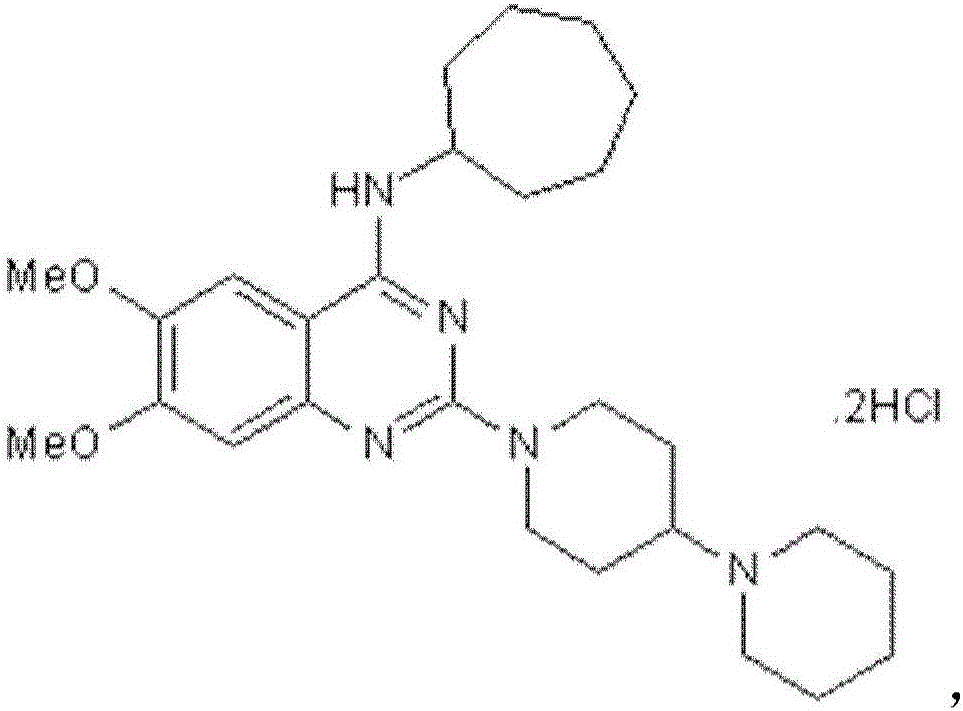Application of sorafenib combined with CCR4 antagonist for restraining cancer growth and transfer
An antagonist and antagonism technology, applied in the field of biomedicine, can solve the problems of tumor growth and metastasis that have not yet been seen
- Summary
- Abstract
- Description
- Claims
- Application Information
AI Technical Summary
Problems solved by technology
Method used
Image
Examples
Embodiment 1
[0031] Example 1: Compound
[0032] 1. Sorafenib API was purchased from Yaodu Company.
[0033] 2. The small molecular compound c-021 was purchased from Tocris Company (product number: 3581, purity > 99%), and the molecular formula of the compound is C 27 h 41 N 5 o 2 2HCl, the structure is as follows:
[0034]
[0035] 3. The small molecular compound ST45177901 was purchased from Timtec Company (article number: MFCD04147999, purity > 99%), and the molecular formula of the compound is C 26 h 16 ClN 3 o 4 S 3 , with the following structure:
[0036]
Embodiment 2
[0037] Example 2: Detection of changes in chemokines and cytokines in liver cancer cell lines treated with Sorafenib
[0038] Real-time fluorescence quantitative PCR was used to detect the changes in the secretion levels of chemokines and cytokines after stimulation of liver cancer cell lines with different concentrations of sorafenib, and to screen out the highly secreted factors induced by sorafenib.
[0039] 1. Cells
[0040] Mouse hepatoma cell line Hepa1-6 cells were purchased from ATCC Cell Bank (Product No.: CRL-1830).
[0041] 2. Drugs
[0042] Treat Hepa1-6 cells with different concentrations of sorafenib for 48h:
[0043] Experimental group 1: 4 μM sorafenib was added to the cell culture medium and cultured for 48 hours;
[0044] Experimental group 2: 2 μM sorafenib was added to the cell culture medium and cultured for 48 hours;
[0045] Control group: add an equal volume of DMSO and culture for 48 hours.
[0046] 3. Experimental equipment
[0047] Instrument n...
Embodiment 3
[0051] Example 3: Animal experiment of Sorafenib combined with CCR4 antagonist for the treatment of liver cancer growth and metastasis
[0052] The mouse subcutaneous tumor-bearing model is a model for routine observation of tumor growth and metastasis, so it is used to verify the effect of Sorafenib combined with CCR4 antagonists on the growth and metastasis of liver cancer.
[0053] 1. Animals
[0054] C57BL / 6 mice (all male, weighing 20-24 g, 6 mice per group / cage) were purchased from Beijing Weitong Lihua Experimental Animal Technology Co., Ltd., and were raised in an SPF animal room. A total of 6 groups were divided into experiments.
[0055] 2. Cells
[0056] The mouse liver cancer cell line Hepa1-6 cells were purchased from the ATCC cell bank (product number: CRL-1830), and each mouse was inoculated with 3*10 6 cells, and experimental mice were obtained.
[0057] 3. Drugs
[0058] Group the experimental mice into groups:
[0059] Experimental group 1: intragastric a...
PUM
 Login to View More
Login to View More Abstract
Description
Claims
Application Information
 Login to View More
Login to View More - Generate Ideas
- Intellectual Property
- Life Sciences
- Materials
- Tech Scout
- Unparalleled Data Quality
- Higher Quality Content
- 60% Fewer Hallucinations
Browse by: Latest US Patents, China's latest patents, Technical Efficacy Thesaurus, Application Domain, Technology Topic, Popular Technical Reports.
© 2025 PatSnap. All rights reserved.Legal|Privacy policy|Modern Slavery Act Transparency Statement|Sitemap|About US| Contact US: help@patsnap.com



